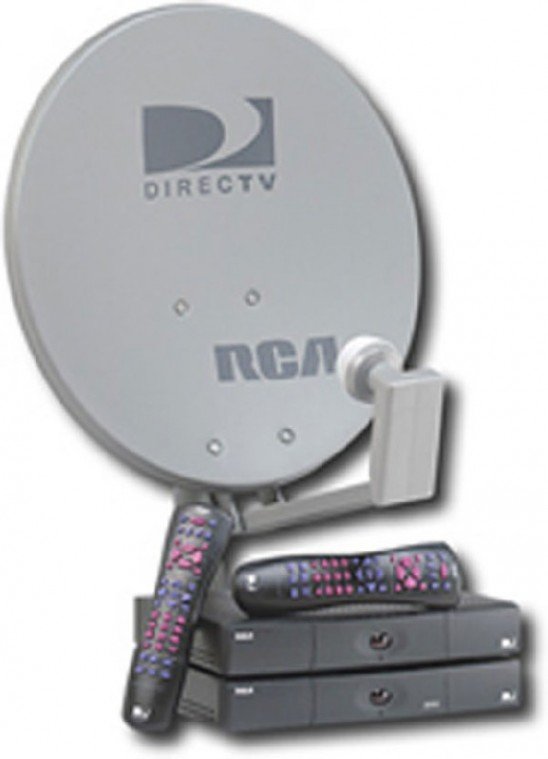Sir Isaac Newton once wrote,
”
I do not know what I may appear to the world; but to myself I
seem to have been only like a boy playing on the seashore, and
diverting my attention in now and then finding a smoother pebble or
a prettier shell than ordinary, whilst the great ocean of truth lay
all undiscovered about me.
”
Sir Isaac Newton once wrote, “I do not know what I may appear to the world; but to myself I seem to have been only like a boy playing on the seashore, and diverting my attention in now and then finding a smoother pebble or a prettier shell than ordinary, whilst the great ocean of truth lay all undiscovered about me.”
OK, maybe there isn’t that much to know about cable versus satellite television, but it can feel that way while standing in front of the DirectTV display at the electronics store.
Reception? Both claim to be the best. Price? Both claim their competition is cheating you. Satisfaction? Both claim their customers rank them number one.
So where is the truth? Somewhere in the land of average, according to market experts J.D. Power & Associates.
Cable companies remain the industry standard, but satellite providers have become more than a monkey on their backs.
With a firmly established one-quarter share in the market, they’re an 800-pound-gorilla in the making, but there are a few points that separate the two.
Picture quality
Proponents of satellite TV argue that the digital picture is clearer than even digital cable, while cable advocates counter that weather conditions can affect the picture quality of satellite TV, but not their product.
What cable purveyors are referring to is a phenomenon called rain fade. Satellite cable transmitted via Ku-Band receivers (12/14 GHz frequencies and higher) is susceptible to some degree of absorption or scattering as it is beamed to earth via radio waves.
This can result in the loss of a picture, but it is extremely rare and generally occurs only during very heavy rains, snow squalls and blizzards, according to online educational site www.WhatIs.com.
The average storm will cause a weakening of the picture … by about 0.02 percent over the course of a 22,300 mile transmission, according literature published by Spacecom Satellite Transmissions, a satellite technologies broker.
Options
Cable television used to lean on one strong point: Local channels. However, local coverage has become easier to wrangle out of satellite providers.
In turn, while satellite companies trumpeted their easily accessible shows – “just select the show you want to watch and the receiver will find it for you” – the same is now possible with digital cable, which also now offers a variety of sports packages.
Satellite’s only real advantage in this category lies in its foreign offerings – stations from around the world that can be piped in for an additional fee.
Installation
Most homes in the United States are equipped with cable outlets at this point, driving down installation costs for such services. The same cannot be said for satellite, which is still a growing market.
However, in the interests of closing this gap, most satellite providers run regular specials that include free installations.
Provider DirectTV is currently offering free installation for three rooms and competitor DISH Networks has free installation for four televisions.
Cable can be installed nearly anywhere, but it can be an expensive prospect for rural residents, while satellite programming, which requires viewers to have a clear view of the southern sky, can be an insurmountable challenge for apartment dwellers.
Price
The latest battleground for these behemoth providers lies in the trend toward bundling – or combining – television, telephone and Internet services.
Not only can bundling save consumers money, but 44 percent of the respondents in a 2004 J.D. Power & Associates customer satisfaction survey said they wished to combine their cable services with some other telecommunications product or service.
Whether they do so from a cable provider or take the satellite route, they’ll be paying roughly the same amount.
The average satellite customer is currently paying $49.08 a month for service while cable subscribers are shelling out $50.98 a month.
It may be a small margin now, but if rate increases continue at their current pace, cable may lose even more customers to the dish.
Average cable services have gone up in price by 41 percent since 1998. Satellite services have risen eight percent.
Customer satisfaction
The real decision-maker may be satisfaction. The same J.D. Powers & Associates study found satellite users ranked as the most satisfied customers, easily outstripping their cable-based competition.
Local provider Charter Communications ranked dead last in the study, falling behind scandal-ridden and financially beleaguered Adelphia by one star in the customer service category.
Representatives for Charter did not return calls seeking comment for this story.
A telephone message for J.D. Power & Associates winner DISH Networks was not answered in time for publication.













